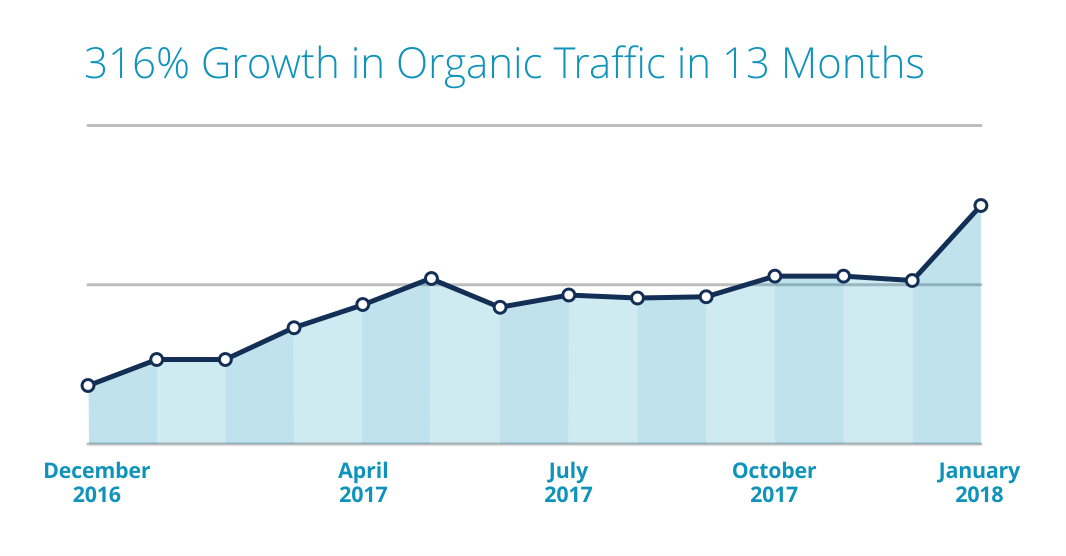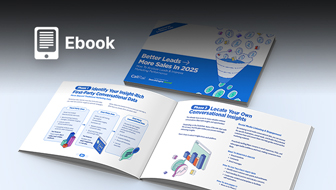Because there’s no guaranteed roadmap for success in search engine optimization (SEO), most SEO pros learn from trial and error as well as from the experiences of fellow practitioners.
Case studies can be good sources of actionable tips for people looking to inform their SEO efforts.
On April 18, I had the opportunity to moderate an SEJ Marketing ThinkTank webinar featuring Nicole DeLeon, Owner and Lead Strategist for North Star Inbound.
DeLeon presented a good case study of how her agency created content, earned awesome links, and increased the traffic of an enterprise real estate client – ultimately sharing tips on how to replicate their success.
Here is a recap of the webinar presentation.

Fixing a Problematic Regional Real Estate Site
DeLeon’s enterprise real estate client had a website that was plagued with a variety of SEO issues, including a history of impact by Google updates and manual link penalties. The site also had no remaining link authority left.
The client attempted to make significant on-page improvements by producing more robust content. They then reached out to North Star Inbound because they wanted to build quality links.
To solve the client’s problem, DeLeon and her team:
- Created 14 pieces of content.
- Built 1,800 links from unique referring domains (with an average Moz Domain Authority of 28).
- Produced results – 316 percent growth in organic traffic – in 13 months.

Most of the resulting traffic went to commercial pages that the client cared about.
How They Did It
1. Pick a Linking Audience
Before creating tons of content, first, you have to figure out who you’re building it for.
Most businesses define their audiences as buyers.
If you want to find out whether your buyer persona is a linking person, you can go to Google and put in the relevant search phrase, for instance, homebuyers inurl:links.
Drill down to each result to find out if they are good link prospects or competitors.
Answer the following questions:
- Do they link to outside resources?
- Do they link to branded resources?
If the answer to both questions is yes, then it might be a good prospect.
Note that there is no need to make concrete tabulations. You are still in the ideation stage, trying to evaluate if there are opportunities worth pursuing.
At this point, you should be able to have a general sense of whether there is enough reason to spend time and energy on a particular campaign. Remember, you need thousands of link opportunities to land a few dozen links
In case you find out that you have buyers who link to external and/or branded resources yet you do not have an ample amount of numbers in order to be competitive in your vertical, then you might need to go outside of your buyer persona.
Look for people with issues and problems related to what you do.
For example, if you have a mattress store, you might not find good link prospects, only a whole bunch of other mattress stores. But if you think outside of the box and shift the gears from your product to the problem that your product solves, you might uncover better opportunities.
All mattress stores deal with trying to help people get a good night’s sleep. If you do an advanced search of sleep inurl:links, you’ll see 23,800 search results that you can work on.
2. Create a Linkable Asset
Now that you have an audience in mind, you can move on to creating a linkable asset such as a long-form resource guide.
Your content should:
- Provide enough information to completely solve your audience’s problem.
- Be better than anyone else’s content.
- Grab and keep attention.
- Offer lots of actionable information.
- Be organized into checklists.
3. Write Tangential Content
Tangential content is anything that affects your buyer that isn’t directly about your product or service.
It is one of the most effective ways to drive links.
While tangential content is not directly related to your product or service, it does not mean that it’s not relevant content.
In the real estate space, services are mainly related to home buying and selling. Some examples of tangential content for this field include articles on home organization, holiday preparation, and home safety.
Tangential content broadens the reach of your campaigns giving you access to new audiences and puts your brand in front of more people.
Key Takeaways
- To achieve success, the client needs a long-term commitment to link building.
- You can’t expect to attain good outcome with only a single piece of content. A sustained effort with several pieces of content is needed to get positive results.
- Focus on different parts of the buying cycle and explore different audiences (i.e., underserved audiences).
- Don’t hesitate to write tangential content.
Video Recap: [Case Study] How to Create Content That Earns Links and Increase Your Traffic 316%
Check out the video recap of the webinar presentation and Q&A below.
Review the presentation deck as well.
Image Credits
Screenshot taken by author, April 2018
Join Us For Our Next Webinar!
The Data Reveals: What It Takes To Win In AI Search
Register now to learn how to stay away from modern SEO strategies that don’t work.






